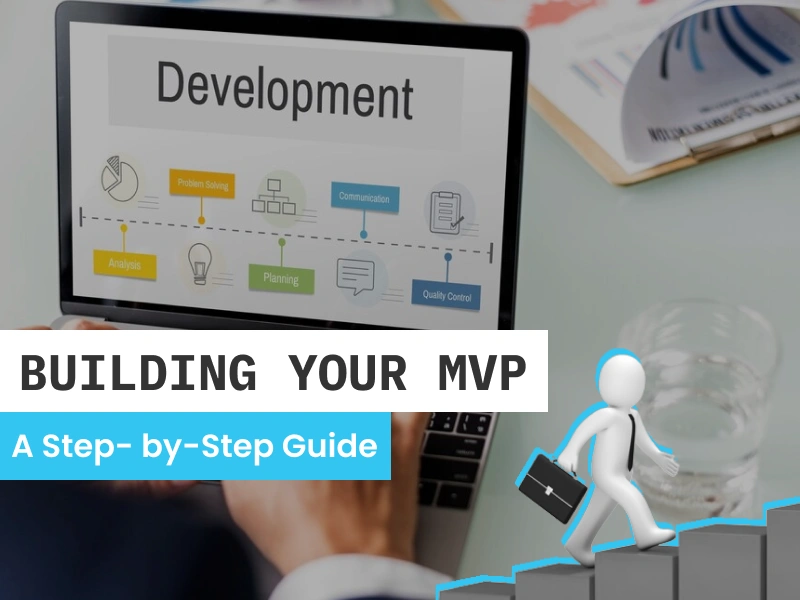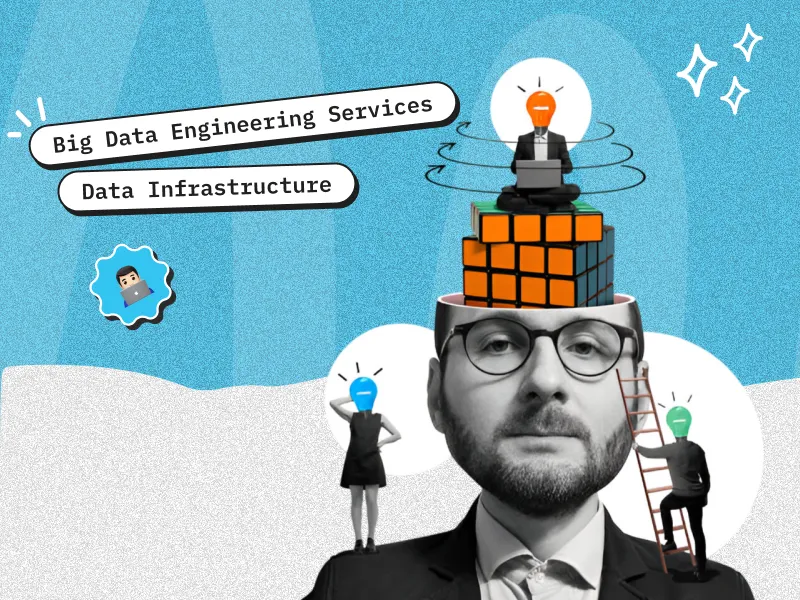Quick Summary
Big Data Engineering Services play a critical role in building robust data infrastructures tailored to future needs. By optimizing data storage, processing, security, and scalability, these services empower organizations to harness data effectively, driving innovation and strategic growth.
Introduction
In the ever-evolving digital landscape, data engineering services have come to the forefront, enabling businesses to build robust data infrastructures capable of addressing tomorrow’s needs. Big data engineering services play a critical role in processing and analyzing vast amounts of data, providing organizations with the tools to derive actionable insights. This blog will explore the fundamental components, architectural principles, and future trends shaping these services, providing insights into how organizations can effectively leverage the potential of big data.
Introduction to Big Data Infrastructure
What is Big Data Infrastructure?
Data infrastructure in the realm of big data refers to the complex ecosystem that includes the necessary hardware and software elements designed to manage, analyze, and store vast amounts of data. Central to this ecosystem is data engineering, which focuses on the design and construction of systems that allow organizations to efficiently process and transform data into meaningful insights. The role of this infrastructure is crucial in data-driven organizations as it enables them to harness data for strategic decision-making, ensuring alignment with business goals while optimizing performance and scalability.
Why is Data Infrastructure Essential?
Data infrastructure is essential because it directly impacts a business’s ability to scale and compete effectively. A strong data infrastructure facilitates the seamless integration of datasets, enabling advanced analytics that drive informed decision-making. As a result, businesses achieve increased scalability, enhanced efficiency, and sustained competitive advantage through optimized operations and innovations.
Key Components of a Robust Data Infrastructure
Data Storage Solutions
Data storage is the cornerstone of any data infrastructure. Choosing the appropriate storage solution requires understanding the differences between data lakes and data warehouses as well as selecting between cloud and on-premises storage options.
- Data Lakes vs. Data Warehouses: Data Lakes support raw, unstructured data, offering flexibility but requiring robust governance. Conversely, data warehouses optimize for structured data analytics with well-defined schemas.
- Choosing Between Cloud and On-Premises Storage: Cloud services offer scalability and cost-efficiency, while on-premises solutions offer control and security. Organizations often adopt hybrid approaches to leverage both benefits economically and strategically.
Data Processing and ETL Pipelines
- ETL (Extract, Transform, Load) for Data Integration: ETL pipelines streamline data processing by collecting data from disparate sources, transforming it into analyzable formats, and loading it into data warehouses or lakes. Data Pipeline optimization is crucial in this process, as it enhances the efficiency and speed of data movement through the ETL pipeline.
- Streamlining Data for Efficient Analytics: Managing and integrating large datasets from various sources ensures seamless data flow, optimizing analytics capabilities for actionable insights.
Data Security and Governance
- Importance of Access Control and Compliance: To protect sensitive information, robust access controls and compliance measures like encryption and fraud detection are imperative.
- Managing Data Privacy with Governance Policies: Effective governance policies ensure data privacy, aligning with regulations like GDPR to avoid legal ramifications, thereby maintaining data integrity and trustworthiness.
What are the Best Practices for Building Data Infrastructure?
1. Define Your Data Strategy
Start by aligning your data needs with broader business objectives to ensure the infrastructure supports scalable growth and strategic planning.
- Aligning Data Needs with Business Objectives: Identifying the main goals will direct data collection, storage, processing, and analytics, ensuring alignment with organizational targets. Engaging in data engineering consulting can provide valuable insights to refine your strategy and ensure it aligns with industry best practices.
2. Set Up Data Collection and Quality Assurance
Ensuring the collection of high-quality, relevant data is pivotal.
- Ensuring High-Quality, Relevant Data Collection: Implement data validation frameworks to maintain data integrity and use predictive models to forecast and adjust for future data needs.
3. Establish Data Integration Workflows
Building a well-defined workflow for data integration streamlines data interaction across systems, ensuring quick access and real-time processing.
- Streamlining Data Flow from Multiple Sources: Configure automated services that lower latency and enhance operational performance by integrating various data streams seamlessly.
4. Implement Automation and Monitoring
Automation minimizes errors and optimizes workflow efficiencies while real-time monitoring ensures reliability and timely interventions.
- Automating Workflows and Real-Time Monitoring for Reliability: Automated alerting and machine learning algorithms can predict system failures, and allocate resources dynamically, ensuring uninterrupted operations.
Processing and Analyzing Big Data at Scale
Optimizing Processing Speed
- Leveraging Distributed Computing for Big Data: Use technologies like Apache Hadoop and Apache Spark to facilitate high-speed data processing by enabling parallel processing across numerous servers. This approach is integral to effective data engineering and analytics, allowing organizations to handle large volumes of data efficiently and derive meaningful insights rapidly.
Real-Time vs. Batch Processing
- When to Use Stream Processing vs. Batch Processing: Choosing the right processing type is crucial. Stream processing is ideal for real-time analytics needs, whereas batch processing is suited for analyzing historical data accumulations.
Utilizing AI and Machine Learning in Big Data
The integration of AI and Machine Learning in big data enhances predictive analytics, offering nuanced insights and foresight.
- AI-Driven Insights and Predictive Analytics: Machine learning models automate tasks such as data classification and predictive trends analysis, enabling proactive decision-making.
Read more: How can Databricks Certified Data Engineer Associate help your business?
Preparing for Future Challenges in Data Management
As data volumes grow, infrastructure must adapt to meet new challenges. Key areas of focus include:
- Scalability: Ensuring the infrastructure can handle increasing data loads without performance degradation.
- Security: Develop robust frameworks to protect sensitive data and counteract potential breaches.
- Data Volume Growth: Implementing solutions that can efficiently manage large, unstructured datasets.
By proactively addressing these challenges, organizations can future-proof their infrastructure, ensuring resilience and efficiency. Embracing emerging trends and technologies in data management will not only help tackle current issues but also prepare for the future of data engineering, enabling businesses to stay ahead in an increasingly data-driven world.
Conclusion
As the demand for more sophisticated data handling continues to grow, big data engineering services are pivotal in laying the foundation for tomorrow’s needs. By understanding the key components of data engineering services and staying attuned to evolving trends, organizations can harness the true power of their data. This proactive approach not only ensures they remain competitive and innovative in a data-centric world but also positions them to capitalize on emerging opportunities driven by data analytics and real-time insights.














 30 mins free Consulting
30 mins free Consulting 
 7 min read
7 min read 







 Love we get from the world
Love we get from the world 